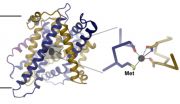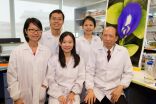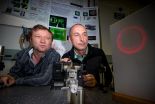(Press-News.org) To make a decision for or against adjuvant chemotherapy, a test to measure the concentrations of the biomarkers uPA and PAI-1 in the tumour tissue is available for breast cancer patients. However, as suitable studies are lacking, it remains unclear for patients with an intermediate risk of recurrence which benefit or harm a treatment strategy based on this test may have for them. This is the result of the final report published by the Institute for Quality and Efficiency in Health Care (IQWiG) on 20 October 2014.
Adjuvant systemic treatments aim to prolong survival
Even if the breast cancer was completely removed in surgery, the tumour can come back. The risk of such a recurrence can be low, intermediate or high. Adjuvant systemic treatments including chemotherapy are used to lower the risk of recurrence and prolong survival. Until now, whether or not they are used has mostly been determined by the patients' age, the number of lymph nodes affected and the grade of the tumour cells.
Predictive markers aim to improve treatment decision
Whereas generally no chemotherapy is recommended for patients with low risk of recurrence, doctors usually recommend adjuvant treatment for patients with high risk of recurrence. However, for patients with an intermediate risk, the established factors (including grade of the tumour cells) are not sufficient to make such a treatment recommendation. This is why the guidelines do not contain any such recommendations.
In order to make better treatment decisions in patients with intermediate risk of recurrence, and to potentially spare them from the burden of chemotherapy, researchers are investigating so-called biomarkers. These biomarkers aim to help identify those patients who are very likely to benefit from chemotherapy.
High concentration is associated with poor prognosis
The two proteins urokinase-type plasminogen activator (uPA) and its inhibitor PAI-1 could be this kind of biomarkers. Both play an important role in metabolic processes taking place in the tumour. If their concentration in the tumour tissue is high, there is also a higher probability of recurrence.
IQWiG was commissioned to investigate whether uPA and PAI-1 are also suited as so-called predictive markers and whether treating staff and patients can base their decisions for or against chemotherapy on the results of corresponding tests.
Design of the only study was unsuitable
IQWiG found one study (the Chemo N0 study) that investigated the benefit of adjuvant chemotherapy in patients with high concentrations of uPA and PAI-1. However, its design was unsuitable to comprehensively answer the research question of the report.
On the one hand, patients with high concentration of the marker who received chemotherapy had no survival advantage (disease-free survival and overall survival) in comparison with patients without chemotherapy. On the other hand, the benefit of chemotherapy was not investigated in patients with low concentration of uPA and PAI-1.
As suitable studies are lacking, the benefit or harm of a strategy based on uPA and PAI-1 for or against chemotherapy therefore remain unclear.
INFORMATION:
Process of report production
IQWiG published the preliminary results in the form of the preliminary report in March 2014 and interested parties were invited to submit comments. At the end of the commenting procedure, the preliminary report was revised and sent as a final report to the commissioning agency in August 2014. The written comments submitted were published in a separate document at the same time as the final report. The report was produced in collaboration with external experts.
The executive summary provides an overview of the background, procedure and further results of the Report.
Individuals who are genetically predisposed to obesity may soon have a therapeutic solution to combat their condition. A research team led by scientists from the National University of Singapore (NUS) has identified several potent inhibitors that selectively target FTO, the common fat mass and obesity-associated gene. These FTO-specific inhibitors pave the way for the development of novel anti-obesity drugs and treatments.
The research, led by Assistant Professor Esther Woon from the Department of Pharmacy at the NUS Faculty of Science, along with colleagues from the ...
In a world of matinee idols and cover girls it's easy to assume that humans want their men to be manly and their women womanly.
But a groundbreaking new study suggests that, rather than being a preference passed down through a long process of social and sexual selection, it's a relatively new habit that has only emerged in modern, urbanised societies.
A team of psychologists, anthropologists and biologists, led by Brunel University London, surveyed 12 populations around the world, from the primitive to the highly developed.
Surprisingly, only in the most industrialised ...
Iron is the most abundant trace element in humans. As a cofactor of certain proteins, it plays an essential role in oxygen transport and metabolism. Due to the major importance of iron in a wide variety of cellular processes, and the harm caused by its uncontrolled accumulation in the body, its uptake and storage is strictly regulated. In mammals, iron is imported into cells by the membrane transport protein DMT1. Mutations of DMT1, which affect its transport properties, lead to iron-related metabolic disorders such as anemia and the iron storage disease hemochromatosis.
Ines ...
How did life originate? And can scientists create life? These questions not only occupy the minds of scientists interested in the origin of life, but also researchers working with technology of the future. If we can create artificial living systems, we may not only understand the origin of life - we can also revolutionize the future of technology.
Protocells are the simplest, most primitive living systems, you can think of. The oldest ancestor of life on Earth was a protocell, and when we see, what it eventually managed to evolve into, we understand why science is so fascinated ...
The drug combination umeclidinium/vilanterol (trade name Anoro) has been approved since May 2014 for adults with chronic obstructive pulmonary disease (COPD). In an early benefit assessment pursuant to the Act on the Reform of the Market for Medicinal Products (AMNOG), the German Institute for Quality and Efficiency in Health Care (IQWiG) examined whether this drug combination offers an added benefit over the appropriate comparator therapy.
According to the findings, an added benefit is not proven: For patients with moderate COPD severity and patients with fewer than ...
Scientists at Nanyang Technological University (NTU Singapore) have discovered a new molecule which can join together chains of amino acids – the building blocks of protein.
Only three other known molecules have been discovered to be able to perform this function, which is an important process in the development of new drugs. A key difference is that the new molecule is able to do the same process 10,000 times faster than the other three and "cleanly" without leaving any residue behind.
This new molecule, which is a type of catalyst or enzyme, was derived from ...
Researchers at VTT Technical Research Centre of Finland, the University of Turku and the University of Oslo have discovered a previously unknown molecular-level mechanism that may partly explain the increased growth of cancer cells. The study, published in the British Journal of Cancer, showed that high levels of miRNA-378a-5p molecule cause cell division anomalies. This renders the number of chromosomes in cancer cells abnormal, which is known to promote growth and the spread of cancer. In addition, the researchers discovered that elevated miRNA378a-5p levels in breast ...
Laser physicists have built a tractor beam that can repel and attract objects, using a hollow laser beam that is bright around the edges and dark in its centre.
It is the first long-distance optical tractor beam and moved particles one fifth of a millimetre in diameter a distance of up to 20 centimetres, around 100 times further than previous experiments.
"Demonstration of a large scale laser beam like this is a kind of holy grail for laser physicists," said Professor Wieslaw Krolikowski, from the Research School of Physics and Engineering at The Australian National ...
What does a 1980s experimental aircraft have to do with state-of-the art quantum technology? Lots, as shown by new research from the Quantum Control Laboratory at the University of Sydney, and published in Nature Physics today.
Over several years a team of scientists has taken inspiration from aerospace research and development programs to make unusually shaped experimental aircraft fly.
"It always amazed me that the X-29, an American airplane that was designed like a dart being thrown backwards, was able to fly. Achieving this, in 1984, came through major advances ...
A pilot study testing a new type of drug in patients with chronic diarrhoea has shown promising effects on reducing their symptoms.
Bile acid diarrhoea (BAD) is a common cause of chronic diarrhoea that is estimated to affect one in 100 adults in western countries, but is often mistaken for irritable bowel syndrome (IBS) by doctors. Many patients are not diagnosed correctly and undergo repeated unnecessary tests.
The study at Imperial College London found that the drug obeticholic acid (OCA) could provide relief for patients with BAD. OCA is the first in a new class ...



